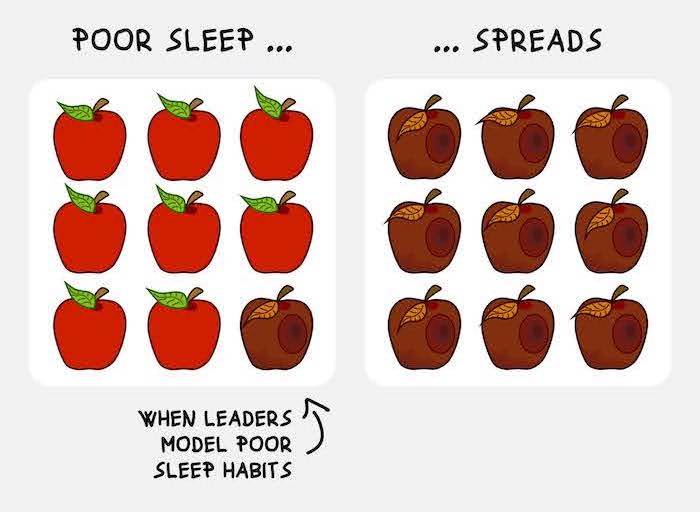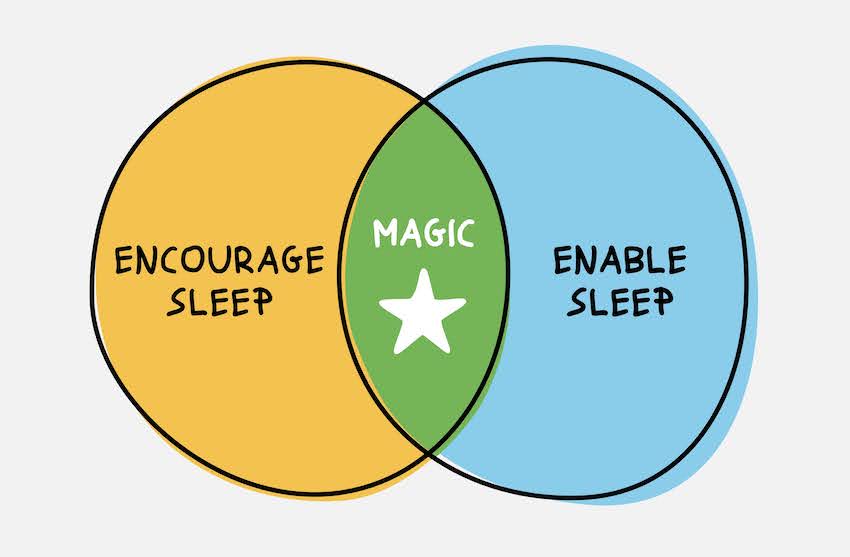The Pros and Cons of Hybrid Work - and How You Can Empower Employees to Thrive
April 14, 2023

With remote and hybrid work here to stay, we often get the question: what does this mean for employees’ wellbeing?
While the flexibility of this new work environment is great for employee happiness and allows folks to live in places they love, it also comes at a cost. And that cost can show up as worse sleep for employees, less connection with colleagues, and more.
So in a world where hybrid work is here to stay - how can you set your employees up for success in this new normal?
First - why this matters to your organization:
Before COVID, 68% of Americans struggled to sleep each week. Studies now estimate that number is 86%.
And, as we’ve covered in prior blogs and our case study with The Work Innovation Lab by Asana, poor sleep harms employee mental health, burnout, engagement, and more.
Even more importantly, because of the one-to-many relationship professional leaders have with their teams, and because sleep affects every system in your body, sleep is one of the highest-leverage aspects leaders have to promote efficient and effective working environments.

Image credit to Roberto Ferraro in his coverage of the Chorus Sleep playbook with The Work Innovation Lab by Asana here.
How we got here:
Taking a step back, this ongoing and rising state of sleep deprivation is concerning but not altogether unexpected.
As we covered in our prior post, How COVID catalyzed a surge in sleep challenges, since the beginning of COVID, we have dealt with a global pandemic and lifestyle disruption.
Now, we are navigating different stressors stemming from the dynamics of hybrid work, concerns of job security, never-ending workloads, and external factors like family pressures or even political or social current events.
Specifically, hybrid work - it’s a double-edged sword.
On the one hand, few (including our team at Chorus) want to trade the flexibility that hybrid work offers for the constraints of being back in the office.
But on the other hand, even top performers and incredible managers can be their own worst enemies — passionate about their projects, working late hours, and not winding down for personal time as they need. Ultimately risking burnout.
As the graphic above illustrates, this has a cascading effect as managers send pings after dinner hours or emails late at night, communicating to others that they need to burn the midnight oil to succeed.
But we know from research that sacrificing sleep does not lead to optimal business outcomes as well-rested employees are happier and more satisfied at work — leaving companies at lower rates than their underslept counterparts. 1
Why does remote work make sleep worse?
The reason this happens is because of how our sleep system works.
Our circadian rhythm relies on cues from the outside world to help indicate when you should feel awake and when you should feel sleepy.
Before remote work, we used to have many very obvious cues for our brain to wind down, such as:
- Leaving the office
- Getting in the car to drive home
- Seeing the outside sky turn from bright noon to dim evening or even fully dark
- And many more
Now, as we sit in our at-home offices with fluorescent lights blasting until we finally close our computers at 9 PM or later, our brains get confused, and our circadian rhythms get out of whack. Ultimately making our sleep…and our wellbeing worse.
So, how can you support your employees?
In a world where we've blurred the lines between our professional and personal lives, supporting your employee's sleep is the critical foundation they need to be at their best.
As we cover in our work with the Work Innovation Lab with Asana, “Better leadership starts with sleep - A research-backed playbook,” implementing “sleep leadership” in your organization can have positive and cascading implications on your teams.
Specifically, “sleep leadership” is defined as:
- Encouraging sleep
- Enabling sleep

Image credit to Roberto Ferraro in his coverage of the Chorus Sleep playbook with The Work Innovation Lab by Asana
Here is a brief excerpt from the playbook:
1. Encouraging sleep. Sleep leadership depends on encouraging your employees to get more and better quality sleep. As a leader, you need to emphasize sleep's critical role in driving work effectiveness. You can do this by talking about the benefits of sleep with your employees and your own healthy sleep habits if you are comfortable sharing.
2. Enabling sleep. When it comes to sleep leadership, enabling sleep is the actionable partner to your encouragement. As a leader, encouraging great sleep is important, but it's not enough to drive long-lasting change. You also need to enable your employees to get high-quality sleep by intentionally designing your organization to promote sleep. This can range from removing early or late-night meetings to offering sleep improvement apps for your employees.
Playbook Findings:
Results show that participants experienced a 55% increase in collaboration when using Chorus Sleep. We also found that when using Chorus Sleep, participants fell asleep faster, stayed asleep longer, and were more engaged and productive at work.
🧩 With remote and hybrid work here to stay, if you’re interested in learning more about implementing sleep leadership at your organization, please reach out!